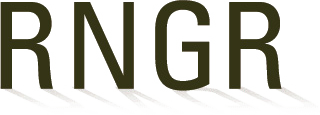
Antennaria (alpina)
|
Mark E. Majerus USDA NRCS - Bridger Plant Materials Center 99 South River Road, Rte. 2, Box 1189 Bridger, Montana 59014-9718 (406) 662-3579 (406) 662-3428 (fax) mmajerus@mt.nrcs.usda.gov http://plant-materials.nrcs.usda.gov/mtpmc |
|
| Family Scientific Name: | Asteraceae | ||
|---|---|---|---|
| Family Common Name: | Sunflower Family | ||
| Scientific Name: | Antennaria alpina (L.) Gaertn. | ||
| Common Name: | Alpine pussytoes | ||
| Species Code: | ANTALP | ||
| Ecotype: | Logan Pass area of Glacier National Park. | ||
| Propagation Goal: | plants | ||
| Propagation Method: | seed | ||
| ProductType: | Propagules (seeds, cuttings, poles, etc.) | ||
| Stock Type: | Develop technology for direct seeding of this species for high elevation habitat restoration. | ||
| Time To Grow: | 0 | ||
| Propagule Processing: | Process seed heads in a hammermill with a #8 (0.125 in diameterholes) screen. Clean processed materials over a fanning mill with light wind to remove light seed and chaff. | ||
| Pre-Planting Treatments: | Our only experience is with a 6-month cold moist chilling in a refrigerator maintained at 34 to 37øF. The seeds were sown on germination pads in petri dishes and kept moist for the duration of the cold chill. The stratified seeds were subsequently exposed to 3 irradiance levels (full, partial, zero) in an environmental growth chamber maintained at 86øF days for an 8-hour daylight photoperiod and 68øF nights for 16 hours. Each treatment consisted of 5 reps of 25 seed/rep. Germination of this species did not decrease with decreasing light intensity from full irradiance (mean 268 footcandles) to partial (mean 23 foot candles) and actually increased slightly from 65.6% to 66.4%. Germination of this species did decline substantially from full and partial irradiance to zero irradiance, with a decrease in germination to 33.6%. Seedling mortality was, however, high in the partial and zero irradiance treatments. No appreciable improvement in germination occurred after exposing the partial and zero irradiance groups to a secondary full irradiance. | ||
| Other Comments: | Study results indicate that a 6-month cold moist chilling is adequate to break dormancy, although the optimum amount of cold chilling was not determined. Germination is effected negatively by reduced irradiance, primarily through increased seedling mortality. During propagation from seeds provide adequate intensities of light. Increase seeding rates to meet target cover or species composition when using mulch or agronomy cloth. | ||
Citation:
Scianna, Joe. 2003. Propagation protocol for production of Propagules (seeds, cuttings, poles, etc.) Antennaria alpina (L.) Gaertn. plants Develop technology for direct seeding of this species for high elevation habitat restoration.; USDA NRCS - Bridger Plant Materials Center Bridger, Montana. In: Native Plant Network. URL: https://NativePlantNetwork.org (accessed 2025/08/10). US Department of Agriculture, Forest Service, National Center for Reforestation, Nurseries, and Genetic Resources.









